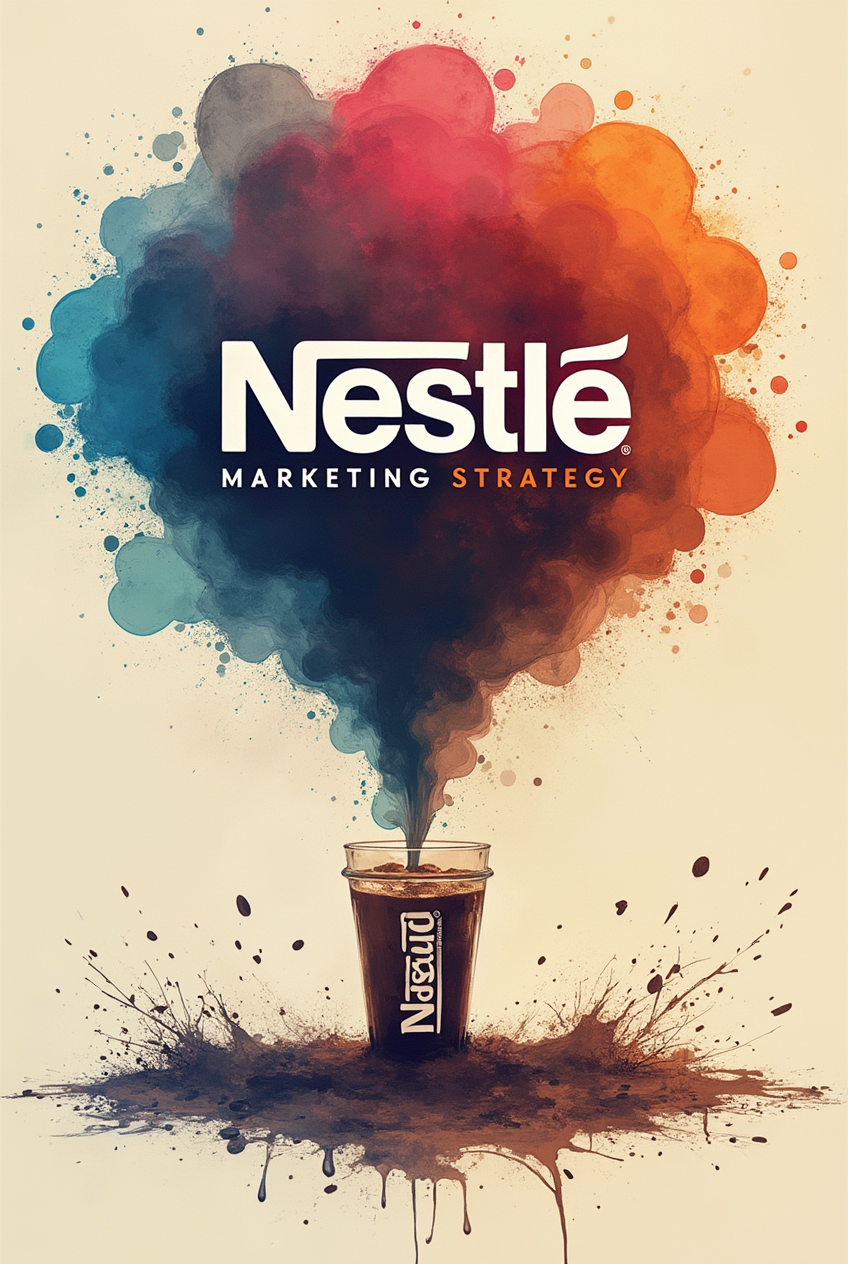For over 180 years, Tiffany & Co. has maintained its position as a global leader in luxury jewelry, becoming synonymous with elegance, quality, and innovation. But what is the secret behind their ongoing success? In this article, we’ll dive into the Tiffany & Co marketing strategy, revealing how the brand captivates audiences, builds lasting customer loyalty, and adapts to ever-evolving market trends. Whether you’re a fan of their iconic Tiffany Blue or a business looking to learn from a masterclass in branding, their approach offers key insights into sustaining growth in the competitive luxury market. Ready to explore the secrets of success? Let’s get started with Tiffany & Co marketing strategy.
Tiffany & Co: A Legacy of Excellence
Tiffany & Co. was founded in 1837 by Charles Lewis Tiffany as a small “fancy goods” store in Brooklyn, Connecticut. Over time, the company expanded its product offerings to include fine jewelry, which eventually became its primary focus. Today, Tiffany & Co. is a global leader in luxury, offering a diverse range of high-end products from diamonds and sterling silver to watches and leather goods. Their reputation is built on a foundation of exquisite craftsmanship, attention to detail, and a commitment to quality.
Table of Contents
Target Market and Positioning

The foundation of any successful marketing strategy is understanding the target market. Tiffany & Co. caters to affluent customers who seek not only quality but also emotional connection through their purchases. While women have traditionally been the brand’s core demographic, Tiffany & Co. has expanded its reach to men and younger generations, offering products such as watches, cufflinks, and men’s jewelry.
Their positioning is clear: Tiffany & Co. represents timeless elegance and sophistication, making their products more than just luxury goods—they are symbols of life’s most cherished moments. This powerful emotional appeal is a key component of the brand’s marketing strategy.
Digital Transformation and Online Presence
As with many heritage brands, Tiffany & Co. had to navigate the digital shift, ensuring they remained relevant in a modern, tech-savvy world. Over the last decade, the brand has embraced digital marketing, creating a robust online presence across various platforms.
One of the most significant elements of Tiffany & Co Marketing strategy is their engagement on social media platforms. With over 20 million followers on Instagram and a strong presence on Pinterest, Tiffany & Co. has used social media to not only promote their products but also to tell a compelling brand story. Their carefully curated Instagram feed showcases the beauty of their pieces, often featuring high-profile collaborations with influencers and celebrities.
Segmentation, Targeting, and Positioning (STP) Strategy
Tiffany & Co marketing strategy thrives on effective segmentation, targeting, and positioning. The brand targets luxury consumers who value exclusivity and fine craftsmanship. These individuals are often professionals with high disposable incomes who look to express their style through sophisticated, high-end jewelry.
The brand’s segmentation focuses on multiple groups, including women, men, and younger audiences who are drawn to the brand’s heritage and modern aesthetic. Positioning Tiffany & Co. as a provider of high-quality jewelry with a legacy of prestige allows the company to maintain its allure for customers of all ages.
Influencer Marketing and Celebrity Collaborations
One of Tiffany & Co.’s most notable marketing tactics is leveraging influencer marketing and high-profile celebrity partnerships. By partnering with A-list celebrities like Beyoncé, Jay-Z, Lady Gaga, and BTS’s Jimin, Tiffany & Co. has elevated its brand image, reaching younger demographics while maintaining its luxury appeal.
For instance, their 2019 “About Love” campaign, featuring Beyoncé and Jay-Z, was a masterclass in influencer marketing. The campaign highlighted the couple’s strong bond while showcasing Tiffany’s iconic diamond jewelry, solidifying the brand’s association with love, elegance, and timeless beauty.
Brand Collaborations: A New Avenue for Growth
Tiffany & Co. has also experimented with brand collaborations to attract new audiences and remain culturally relevant. One of the most notable examples is their collaboration with the streetwear brand Supreme. Launched in 2021, the Tiffany & Co. x Supreme collection featured iconic Tiffany pieces with a modern twist, merging the worlds of high fashion and street culture.

This partnership allowed Tiffany & Co Marketing Strategy to reach a younger, fashion-conscious audience, while Supreme benefitted from Tiffany’s legacy of luxury. The collaboration was a massive success, selling out almost immediately and generating significant media buzz.
Expanding Product Offerings: Reaching New Audiences
Tiffany & Co. has also expanded its product offerings to appeal to a broader audience. While they remain best known for their diamond jewelry, the brand has introduced products that cater to men, such as watches and accessories. Their Tiffany Men’s Collection, which includes items like cufflinks, money clips, and luxury pens, has helped Tiffany & Co. attract a new segment of male consumers.
Additionally, the brand has introduced more affordable options, such as sterling silver jewelry and lifestyle products, allowing them to appeal to younger consumers who aspire to own a piece of Tiffany without the steep price tag of their high-end items.
The Role of Emotional Connection in Marketing
A crucial aspect of Tiffany & Co marketing strategy is the emotional connection they create with their customers. Purchasing a Tiffany & Co. piece is often associated with life’s most important milestones, such as engagements, weddings, and anniversaries. The brand’s famous Tiffany Blue Box has become a symbol of these cherished moments, adding an emotional layer to every purchase.
Tiffany & Co. capitalizes on this emotional appeal through their advertising campaigns, which often focus on love, relationships, and the special moments that their jewelry represents. Their marketing emphasizes the idea that buying a Tiffany piece is not just about the product itself, but the memories and emotions it symbolizes.
Tiffany & Co Marketing Digital Success
In the digital age, Tiffany & Co. has had to reinvent their marketing approach to stay relevant. Social media has been a cornerstone of their strategy, allowing them to engage with their audience on a more personal level. Their Instagram, Pinterest, and YouTube channels are filled with stunning visuals that reflect the brand’s heritage, while also appealing to a modern audience.
Tiffany & Co.’s Pinterest strategy has been particularly effective. With over 320,000 followers, the brand uses the platform to create mood boards for special occasions like weddings, engagements, and anniversaries. By curating content that resonates with their audience’s interests, Tiffany & Co. keeps itself top-of-mind for customers planning these milestone events.
Challenges and Opportunities
Despite its success, Tiffany & Co. has faced its share of challenges. One notable misstep was the “Not Your Mother’s Tiffany” campaign, which aimed to attract a younger audience but ended up alienating some of their older, loyal customers. The backlash from this campaign serves as a reminder that while innovation is essential, brands must also stay true to their core identity.
Looking ahead, Tiffany & Co. has significant opportunities in global markets, particularly in Asia and the Middle East, where luxury demand is growing rapidly. By continuing to innovate their marketing strategies while maintaining their core brand values, Tiffany & Co. is well-positioned to remain a leader in the luxury jewelry market.
Competitor Landscape
Tiffany & Co. operates in a competitive market alongside other luxury brands like Cartier, Harry Winston, and Bulgari. These brands offer their own unique selling points, whether it’s Cartier’s long history of royal patronage or Bulgari’s bold, colorful designs. However, Tiffany & Co. has carved out a niche for itself through its association with elegance, timelessness, and emotional significance.
Conclusion
Tiffany & Co marketing strategy is a testament to the power of brand heritage, emotional connection, and digital innovation. By staying true to its roots while embracing the opportunities of the digital age, Tiffany & Co. continues to captivate a global audience. Whether through influencer collaborations, social media engagement, or emotional advertising campaigns, Tiffany & Co. has shown that it understands how to connect with its customers on a deep, meaningful level.
As the brand moves forward, it will be interesting to see how they continue to evolve their marketing approach to stay relevant in an ever-changing market. One thing is certain—Tiffany & Co.’s legacy of luxury and elegance is here to stay.










